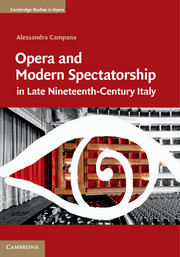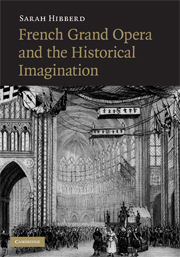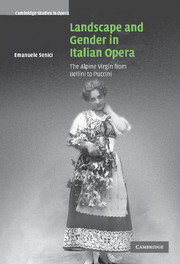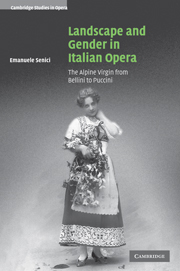Opera and Modern Spectatorship in Late Nineteenth-Century Italy
At the turn of the twentieth century Italian opera participated to the making of a modern spectator. The Ricordi stage manuals testify to the need to harness the effects of operatic performance, activating opera's capacity to cultivate a public. This book considers how four operas and one film deal with their public: one that in Boito's Mefistofele is entertained by special effects, or that in Verdi's Simon Boccanegra is called upon as a political body to confront the specters of history. Also a public that in Verdi's Otello is subjected to the manipulation of contemporary acting, or one that in Puccini's Manon Lescaut is urged to question the mechanism of spectatorship. Lastly, the silent film Rapsodia satanica, thanks to the craft and prestige of Pietro Mascagni's score, attempts to transform the new industrial medium into art, addressing its public's search for a bourgeois pan-European cultural identity, right at the outset of the First World War.
- Expands the field of opera studies to include a critical view on contemporary staging practices and their relation to the audience
- Combines close readings of score, libretto and staging instructions with other critical discourses related to opera as a cultural product
- Offers new contextual insights on key operas by Verdi, Boito and Puccini, and a film score by Mascagni
Product details
April 2015Hardback
9781107051898
220 pages
253 × 182 × 15 mm
0.62kg
26 b/w illus. 29 music examples
Available
Table of Contents
- 1. Staging manuals and the public
- 2. The 'fleeting moment': Arrigo Boito's Mefistofele
- 3. Milan 1881: Simon Boccanegra and the specters of history
- 4. Acting in Otello: on the rhetoric of the medium
- 5. The Real of opera: Puccini's Manon Lescaut
- 6. Faust again: the silent film Rapsodia satanica and Mascagni's score
- Postlude.







